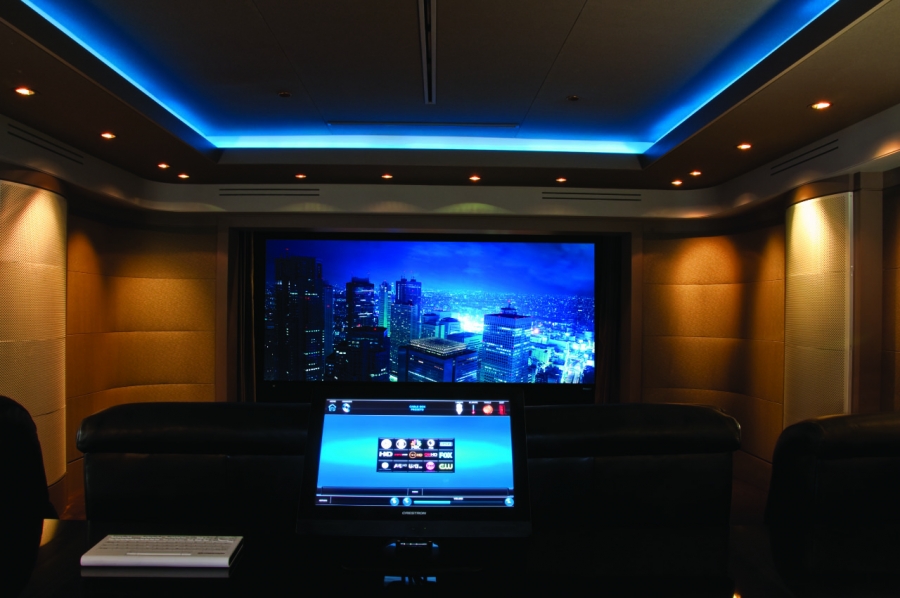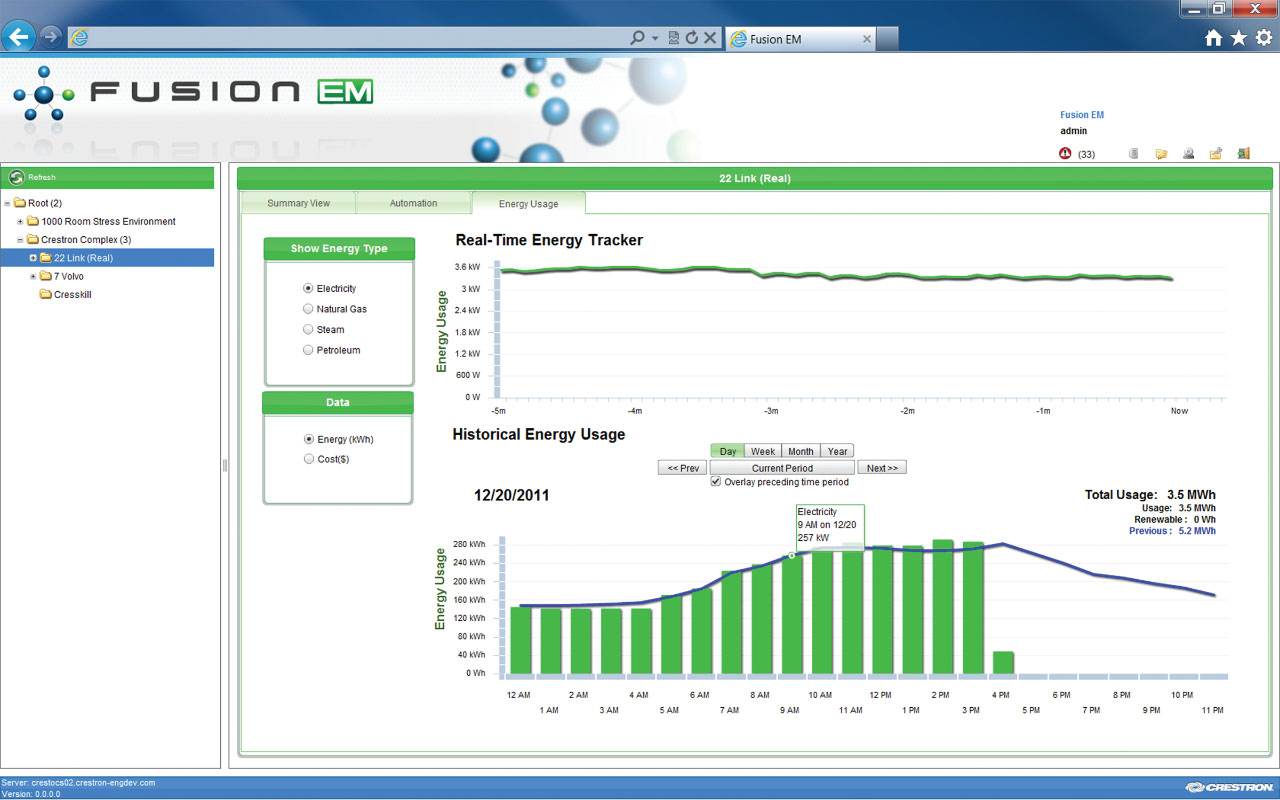Home Automation
Will home automation become something that we can’t imagine living without? Jeff Wilson takes us on a tour of a design showroom that highlights some of the time- and energy-saving benefits of automation.
Home automation sounds a little intimidating. Just the mention makes me think of the USS Enterprise on Star Trek – seamless integration of controls for everything from lighting and sound to heating and air-conditioning to security and energy-efficiency. Oh, and don’t forget to set those phasers to stun.
 Image courtesy of Crestron
Image courtesy of Crestron
Ten years ago, the only kind of home automation I’d heard of was “the Clapper,” which I didn’t think I’d have any use for until I was old enough to fall and not be able to get back up. Times have changed, though, as I learned during my recent visit to the Crestron Design Showroom in New York City – Crestron is an automation company well known in commercial building for their very high quality and attention to detail. Bryan Celli, the Design Showroom Manager, gave me a tour of the Crestron facility in the Decoration and Design Building in Manhattan.

According to Celli, Crestron has helped office towers and hotel chains to manage their energy use more efficiently by automating simple tasks like lighting and HVAC. When you check into a hotel, for example, the heat is turned up automatically and the lights are turned on so that when you reach your room, it’s warm and inviting. Until you got there, however, the lights were off and the room was cold. Pretty smart. With such large buildings, the large, up-front costs are easily offset by the energy savings over time.
It used to be that automation solutions for homes were far too expensive, and most companies that dabbled in home automation only tackled one aspect, like lighting or audio and video. Homeowners who dished out the cash to put in these early systems soon found themselves with five remotes for different systems that couldn’t “talk” to each other because they were made by different manufacturers. That resulted in cobbled-together systems that didn’t really work as intended.

Enter Crestron – this company employs an army of engineers to make sure that all aspects of their system work together effortlessly, and it uses technology like touchscreen controls to make using the systems intuitive.
They even have apps (and docking stations) for your tablet or smart phone, so you can (for example) unlock the door for the plumber while you’re at work (and lock it again when he leaves and know how long he was in the house) or set the thermostat lower at home when you’re on vacation. But that’s just the beginning.
From a convenience standpoint, imagine tapping one icon marked “Movie Time” and having the lights dim, the motorized shades lower, and the home entertainment system boot up. Then, from that same control, sort through the movies on your home server and start the show (I’m sure automated popcorn is in the works). Tap an icon that says “Goodnight,” and the lights turn off, shades drop, all doors lock, and the security system is armed. Another icon marked “Dinner Party” brings down the lights a bit and brings up your favorite Ella Fitzgerald collection at just the right listening level. “Have to get up in the middle of the night?” Celli asks, motioning to small downlights mounted in the walls about a foot off the floor. “These will come on automatically, giving you some light to get down the hall, and then shut off again when you’re back in bed.” For me, that would mean no more stubbed toes at 3 AM. Pretty nice.

From an energy-efficiency standpoint, Crestron’s systems can be customized to control your heat and air conditioning, as well as automated shades in the windows, to help minimize your energy use. Shades can drop in the windows on the sunny south side of the house in the summer to keep the solar energy from heating the house and stressing the air conditioning. Lights can be automated so that they’re turned off in rooms without occupants. Rather than cluttering the walls with thermostats, a single thermostat controller can be mounted in a closet, and small, inconspicuous temperature sensors can be mounted in different parts of the house to help control a multi-zone HVAC system. Energy use can be closely watched through Crestron’s Energy Monitoring interface so that you’re aware of where you’re wasting energy and can adjust your habits accordingly.

One of the most amazing things about the Crestron system is what you don’t see – you’d be hard pressed to point out the home automation technology, aside from the occasional small interface, in the fully wired design showroom. “Designers love the fact that the technology works without being in your face,” says Celli. Where you can see the technology, Crestron has worked hard to make those elements elegant and streamlined. I’d call it an “iHouse” but I’d probably get sued.
Is all of this necessary? Maybe not, but that’s what they said about the horseless carriage. I’d be likely to install home automation for the energy savings and then tack on the convenience items “just because.” Are we really ready for automated homes? We already live with lots of automation in our cars without even thinking about it, so why wouldn’t we want some of the same ease of use in our homes? In the end, automating our homes will help to ready them for the coming “smart grid” technology, too, which should all work together to bring energy use and costs down.
That’s a good thing. Scottie, warp speed!

Jeff Wilson
Jeff Wilson, author of The Greened House Effect and host of Buildipedia's Everyday DIY series, many HGTV and diy network shows and 25-year veteran of the construction industry, lives with his wife and two daughters in a perpetually half-renovated home in a small college town in Ohio. You can see Jeff’s most recent project, the Deep Energy Retrofit of his 1940’s Cape Cod style home at thegreenedhouseeffect.com.
Website: www.jeffwilsonregularguy.com
